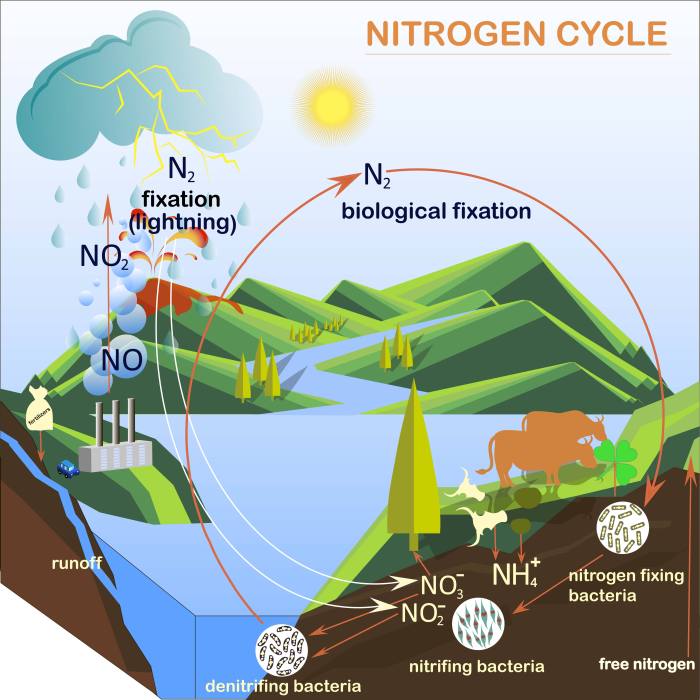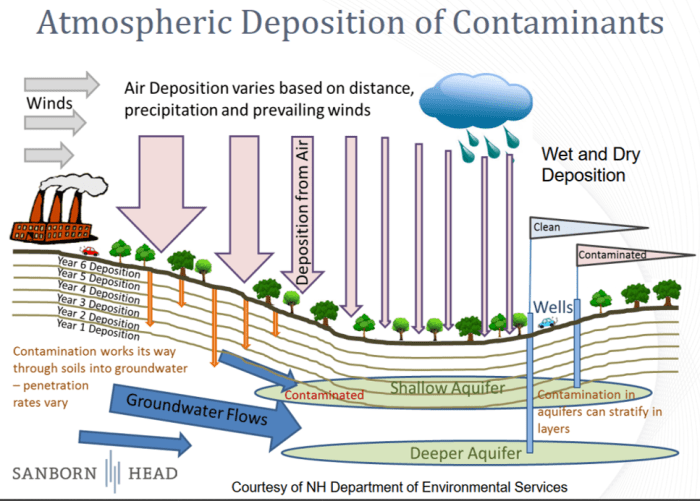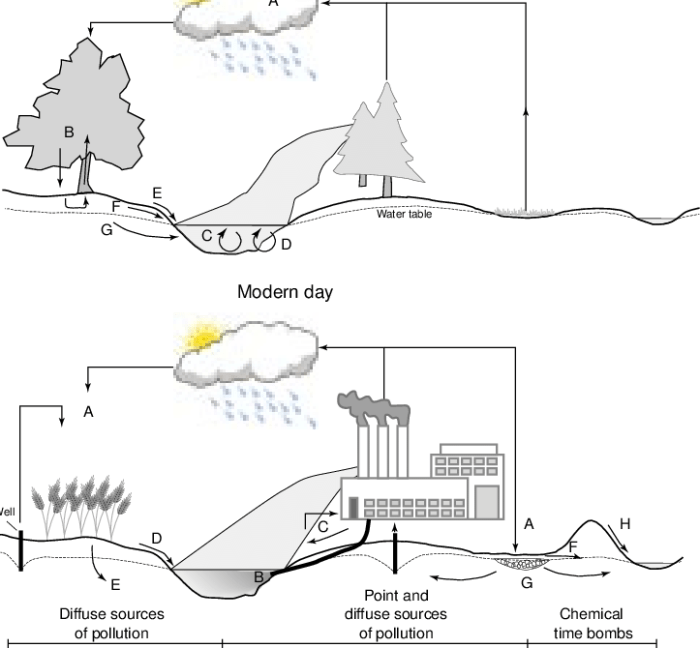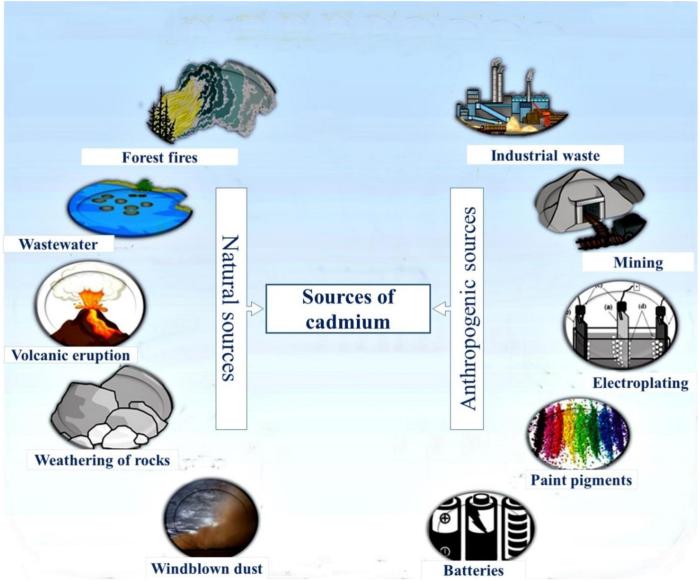Atmospheric deposition of contaminants is an excellent example of the interconnectedness of environmental systems and the potential risks posed by human activities to both human health and ecosystems.
This complex process involves the transport and deposition of pollutants from the atmosphere to the Earth’s surface, where they can have a wide range of adverse effects. Understanding the sources, pathways, and impacts of atmospheric deposition is crucial for developing effective mitigation strategies and protecting the environment.
Atmospheric Deposition of Contaminants

Atmospheric deposition is a significant pathway for the transport and accumulation of contaminants in the environment. It refers to the transfer of substances from the atmosphere to the Earth’s surface through various processes, including wet deposition (rain, snow, fog) and dry deposition (particles settling on surfaces).
Atmospheric deposition plays a crucial role in environmental contamination, as it can introduce harmful substances into ecosystems, affecting air, water, soil, and biota.
Environmental Impacts of Atmospheric Deposition, Atmospheric deposition of contaminants is an excellent example of
Atmospheric deposition can have severe impacts on the environment, including:
- Water Quality Impairment:Contaminants deposited into water bodies can alter water chemistry, affecting aquatic organisms and ecosystem health.
- Soil Contamination:Atmospheric deposition of heavy metals, persistent organic pollutants, and other substances can accumulate in soils, potentially affecting soil fertility and crop production.
- Air Pollution:Particulate matter and gaseous pollutants deposited from the atmosphere can contribute to air pollution, leading to respiratory and cardiovascular problems.
- Ecosystem Disruption:Atmospheric deposition can disrupt ecological balance by introducing non-native species or altering nutrient cycles.
Sources and Pathways of Contaminant Deposition
Atmospheric contaminants originate from various sources, including:
- Industrial Activities:Combustion processes, manufacturing, and mining release pollutants such as sulfur dioxide, nitrogen oxides, and heavy metals into the atmosphere.
- Transportation:Vehicle exhaust contributes significantly to atmospheric deposition of particulate matter, nitrogen oxides, and hydrocarbons.
- Natural Events:Volcanic eruptions, wildfires, and dust storms can release large amounts of particulate matter and other contaminants into the atmosphere.
Contaminants are transported through the atmosphere by wind currents and can travel long distances before being deposited.
Monitoring and Measurement of Atmospheric Deposition
Monitoring atmospheric deposition is crucial for assessing its environmental impacts and developing mitigation strategies. Methods include:
- Wet Deposition Monitoring:Collection and analysis of rainwater, snow, or fog to measure dissolved contaminants.
- Dry Deposition Monitoring:Sampling of particles deposited on surfaces using passive samplers or impactors.
Challenges in measuring deposition rates include variability in atmospheric conditions and the need for long-term monitoring to capture seasonal and annual trends.
Modeling and Prediction of Atmospheric Deposition
Atmospheric dispersion models are used to predict the transport and deposition of contaminants. These models consider factors such as emission rates, atmospheric conditions, and surface characteristics.
Dispersion models help identify areas at risk of high deposition and support decision-making for pollution control and environmental management.
Mitigation and Control Strategies for Atmospheric Deposition
Mitigating atmospheric deposition requires a combination of strategies:
- Emission Reduction:Implementing pollution control technologies in industries and promoting fuel-efficient transportation systems.
- Land Use Planning:Siting new emission sources away from sensitive areas and promoting green infrastructure.
- International Cooperation:Collaboration among countries to address transboundary air pollution and implement global agreements on emission reductions.
Key Questions Answered: Atmospheric Deposition Of Contaminants Is An Excellent Example Of
What are the primary sources of atmospheric contaminants?
The primary sources of atmospheric contaminants include industrial processes, transportation, and natural events such as volcanic eruptions and wildfires.
How are contaminants transported and deposited into the environment?
Contaminants are transported through the atmosphere by wind patterns and can be deposited through wet deposition (rain, snow, fog) or dry deposition (direct settling of particles).
What are the potential health and ecological risks associated with atmospheric deposition?
Atmospheric deposition can contribute to respiratory problems, cardiovascular disease, and other health issues in humans. It can also harm ecosystems by acidifying lakes and streams, damaging vegetation, and disrupting food chains.


